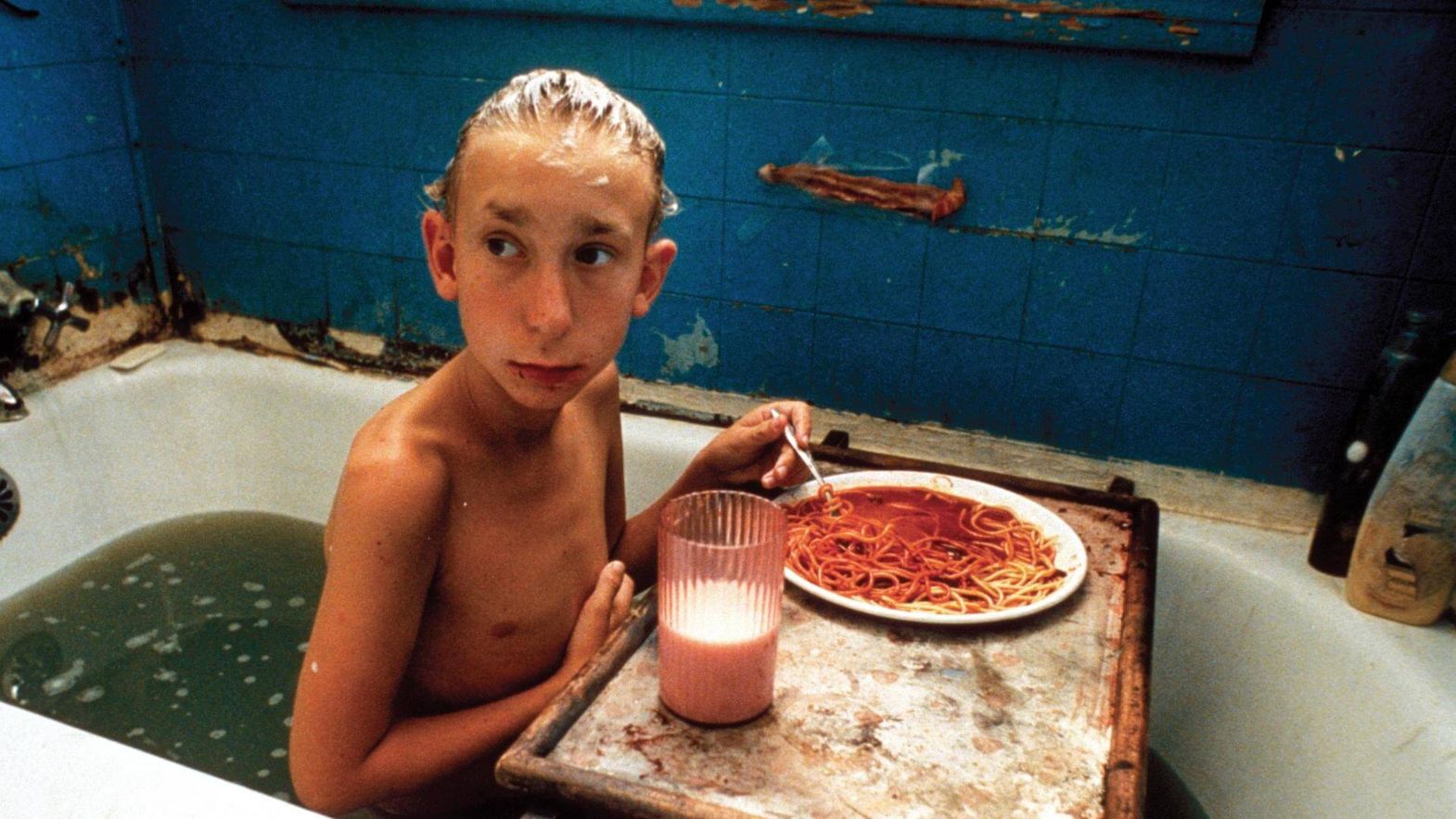 © 1997 WBEI
© 1997 WBEI
After writing Kids (Larry Clark, 1995) Harmony Korine bets everything by playing the role of director for the first time to make Gummo, a work that immediately consecrates him as one of the most controversial and courageous authors of the American independent scene. When you watch Gummo for the first time you wonder who dared to produce it, how they could accept a film that exalts without limit the disgusting aesthetics. Yet there is something magical and right in Gummo, an extremely subversive film that amazes and pleases because, once again, a new approach to making cinema has been discovered, one that contributes to making it an art that does not set any limits.
A tornado ravages the small town of Xenia, Ohio. Among the ruins of this disaster are intertwined the daily and absurd events of strange, grotesque and unlikely characters. Harmony Korine immerses the viewer in this toxic and degenerate scenario with an equally dirty and annoying mise-en-scène, which favors a documentary approach so plausible as to be sickening in the eyes of the beholder. In Gummo, there is little artifice and flirtation with fiction, and this is the winning approach to upset the viewer even in the days and months following the screening. The anonymous town comes alive when a couple of boys who kill cats to buy a smoothie, acts of sexual violence exercised by the father on his daughter are told, and two girls wax their nipples in front of a little girl. In short, nonsense reigns supreme, racism abounds, and the deplorable conditions of the characters become normality. Harmony Korine knows no limit to the worst, and that's what makes it so unique, talked about, and – let me just say – indispensable. Gummo is a pillar of underground cinema because it has helped to expand it by showing itself to a more general audience, to upset and hurt them.
In Gummo there is no narrative arc, but rather an interweaving of activities between various characters that is unpredictable and surreal. Some are presented in portrait-interview form, others while amid their questionable activities. Yet for them everything is normal. Nothing makes sense except for the protagonists. Xenia represents an acidic, wrong, anarchic, violent, rotten world, but is hilarious in her degeneracy and deplorability since one hardly experiences a human condition so extreme, so she is hilarious. In addition to entertaining, the film conveys embarrassment which is nevertheless what causes hilarity. Seasoned with a soundtrack based mainly on thrash and death metal tracks and scratchy and disturbing cinematography, the aesthetic of the film perfectly reflects the intent to cause the viewer to throw up.
Gummo marks the birth of a new filmmaker and markets an extreme approach to the Seventh Art that, like it or not, has been able to expand the possibilities of cinema by destroying the dominant - and even ethical – codes, proposing itself as a controversial work that defines a new idea of risk in the cinematographic landscape. After Gummo it will be difficult to cringe, slap and be indignant at the cinema; a new level of artistic freedom has been unlocked. Harmony Korine will continue to explore outcast and disgusting personalities highlighting the most deplorable and revolting sides of human nature, demonstrating more and more that art has no constraints and that our mind can create fascinating and at the same time embarrassing situations to be enjoyed.
Alessandro Panelli